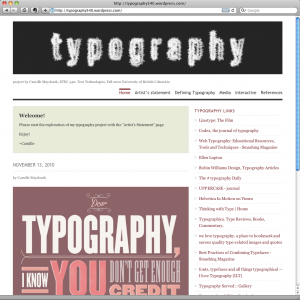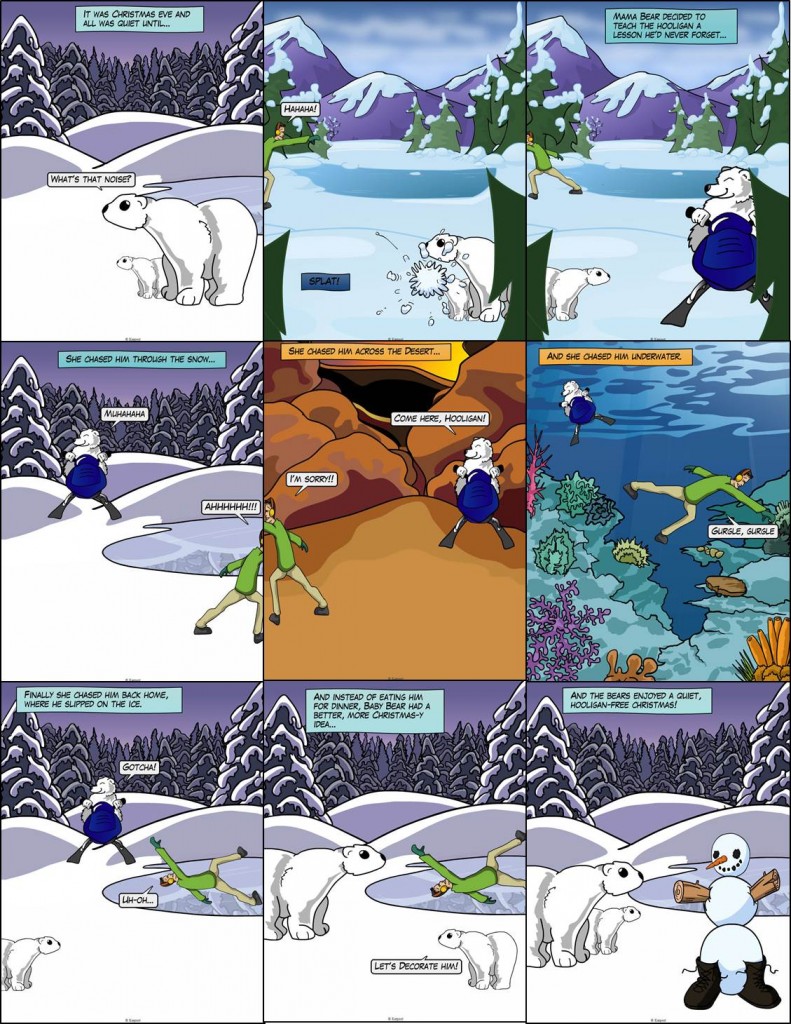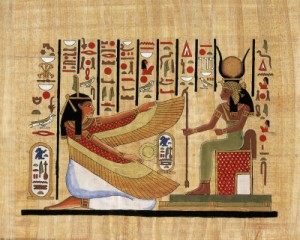We are living in exciting times. As segments of the global population struggle simply to attain an education, to develop the ability to read text – “mere literacy”¹ – other parts of the world are developing technology that make the messages of others more accessible by minimizing or excluding alphabetic text altogether. Symbolic icons, pictographic images and video, colour, order and layout relay impressionistic information of variable interpretive possibilities offering insights to be built upon by the reader or viewer in an active sense, creating new knowledge2 as opposed to simply and passively adopting explicitly stated thoughts of another – an assumedly authoritative author3 . No doubt the time would come that leagues of scholars would collaborate to initiate new pedagogies for literacy – or multiliteracies as the case may be.
Sixteen years ago, ten educator-authors4 determined to re-evaluate the pedagogy of literacy. With the emergence of the web, subsequent to the still relatively recent rise of the moving picture and television5 , modes of communication were changing once again. The book – the minimally challenged printed word of the past 500 years – now seemed to be meeting a new form of knowledge presentation, and the New London Group was noticing the effects of new technology on the restructured workplace and people’s public and private lives. As such, these changes would need to be reflected as well in education: a new pedagogy was needing to be developed. As of yet, the implementation of that pedagogy continues to need embracing by teachers willing to implement it, to transform education and make it once again relevant. In spite of this challenge, the mere emergence of multiple ways of accessing the message has the potential to be both democratizing and divergent: democratizing by provision of multiple ways into the message, multiple ways of knowing, understanding and representing one’s own knowledge; divergent by way of global inequities with regards to access, prejudice and oppression. However, it is important that as educators, we not be stifled by inequities. “As educators attempt to address the context of cultural and linguistic diversity through literacy pedagogy, we hear shrill claims and counterclaims about political correctness, the canon of great literature, grammar, and back-to-basics” (New London Group, 1996, para.3): these counterclaims resound still today in a paralyzing manner, but to prevent ourselves from incorporating digital technologies into education is to broaden the gap, to further the inequity. Instead, “literacy educators and students must see themselves as active participants in social change, as learners and students who can be active designers – makers – of social futures” (New London Group, 1996, para. 14). Schools should be a place of opportunity for all students, not an environment in which all are deprived for fear that some are unable to so be supported at home.
In re-evaluation of literacy pedagogy, it remains important to understand our purpose in education: “Pedagogy is a teaching and learning relationship that creates the potential for building learning conditions leading to full and equitable social participation” (New London Group, 1996, para. 1). To this extent, “use of multiliteracies approaches to pedagogy will enable students to achieve … literacy … : creating access to the evolving language of work, power, and community, and fostering the critical engagement necessary for them to design their social futures and achieve success through fulfilling employment” (New London Group, 1996, abstract). If the teaching and learning relationship is to lead to full and equitable social participation, then it must follow that schools provide opportunity and not shirk from the responsibility to maximize a student’s opportunities and ability to fully participate in society. Students should leave their educational institutions with as much advantage as possible, which in today’s world insinuates that they be fluent in text, image, video, pen and paper, Web 1.0 and 2.0, mashups and remixes, and social interaction and collaborative processes both mediated with and independent of digital technology.
Social disparities and inequities in affluence and access are without a doubt of concern to educators, but under a traditional approach to literacy – what the New London Group refers to as “mere literacy” (1996, para. 11) and is centered solely on language and does not incorporate additional media forms – significant improvement in conditions does not seem to manifest. While we cannot equalize social conditions across a singular society let alone globally (nor is this necessarily advisable), we can maximize individual students’ potential within both their societal and global situations – a task both advisable and potentially attainable.
The New London Group notes that “The changing technological and organizational shape of working life provides some with access to lifestyles of unprecedented affluence, while excluding others in ways that are increasingly related to the outcomes of education and training. It may well be that we have to rethink what we are teaching” (1996, para. 4). We need to free ourselves from paralyzing concerns for inequities so that we might engage in the process of becoming catalysts for social change, facilitating our students’ effectiveness. We need to begin seeing the benefits6 of having groups of students from different cultures, languages, and degrees of affluence. Bringing these students together broadens the opportunity to examine multiple perspectives, to stimulate dialogue within the various disciplinary discourses. To bring these elements together with the additional focus on multiliteracies and their media forms is to assist students in the development of “the capacity to speak up, to negotiate, and to be able to engage critically with the conditions of their working lives” (New London Group, 1996, para. 21), developing relevant skills that reflect person-to-person interactions both through and independent of relevant technology in addition to strictly human-computer interactions (HCI) when relevant while valuing students’ individual histories thus inviting them to be engaged and motivated to share.
Students may not come to us with all the material opportunities to design their futures as they would choose. A student may not have the affluence to purchase the technology on her own, but she should have the skills that if opportunity arises, she will know what to do with it. An exceptionally bright student living in poverty has the potential to be afforded opportunity via scholarship. If we do not give him the skills, this scholarship or other recognition is side-barred from the start; the opportunity will never exist because we have so predetermined, and then his loss is our fault.
A multiliteracies approach to education has the potential to bridge barriers, empowering both advantaged and disadvantaged students to become productively effective citizens emerging with skills relevant to their social futures. Current educators are situated at a very exciting time in history, with the potential to effect this change in education and re-engage students with their own potentials to effect social change. These are exciting times to be in education.
.
¹ The New London Group (1996) elaborates: “What we might term “mere literacy” remains centered on language only, and usually on a singular national form of language at that, which is conceived as a stable system based on rules such as mastering sound-letter correspondence. This is based on the assumption that we can discern and describe correct usage. Such a view of language will characteristically translate into a more or less authoritarian kind of pedagogy. A pedagogy of multiliteracies, by contrast, focuses on modes of representation much broader than language alone. These differ according to culture and context, and have specific cognitive, cultural, and social effects.” (Return)
2 This connects for me to Constructivist learning theory (knowledge construction), but also to the more recent Connectivist theory, which is more designed to be compatible & reflective of online learning opportunities. For more information on Connectivist theory, see Siemens on learning as network creation and this blog. (Return)
3 For more commentary on the authority of the author, see my Commentary #2 and associated links and footnotes. (Return)
4 The New London Group (as listed in the footnote here): Courtney Cazden, Harvard University, Graduate School of Education, USA; Bill Cope, National Languages and Literacy Institute of Australia, Centre for Workplace Communication and Culture, University of Technology, Sydney, and James Cook University of North Queensland, Australia; Norman Fairclough, Centre for Language in Social Life, Lancaster University, UK; Jim Gee, Hiatt Center for Urban Education, Clark University, USA; Mary Kalantzis, Institute of Interdisciplinary Studies, James Cook University of North Queensland, Australia; Gunther Kress, Institute of Education, University of London, UK; Allan Luke, Graduate School of Education, University of Queensland, Australia; Carmen Luke, Graduate School of Education, University of Queensland, Australia; Sarah Michaels, Hiatt Center for Urban Education, Clark University, USA; Martin Nakata, School of Education, James Cook University of North Queensland, Australia. (Return)
5 A look at the history of radio and television. As Cindy suggests, each new medium does not seem to be replacing but rather adding yet another form to be understood. Thus, when I say “changing” in the next phrase, I might be better to say “being added to.” (Return)
6 I see a multiliteracies approach additionally leading to the benefits reflected in George Landow’s proposal”that hypermedia revolutionizes education by freeing students from teacher-centred classrooms, promoting critical thinking, empowering students, easing the development and dissemination of instructional materials, facilitating interdisciplinary work and collaboration, breaking down arbitrary and elitist textual barriers by making all text worthy and immediately accessible, and introducing students to new forms of academic writing (Landow 1997, p. 219ff.)” (as cited in Dobson and Willinsky, 2009). I see this reinforced throughout my studies in MET and cannot see justice in depriving students from an approach that affords them these benefits. (Return)
References
Dobson, T. and Willinsky, J. (2009). Digital literacy (draft). The Cambridge Handbook on Literacy. Retrieved online at http://pkp.sfu.ca/files/Digital%20Literacy.pdf
The New London Group. (1996). A Pedagogy of Multiliteracies:Designing Social Futures. Harvard Educational Review 66(1). Retrieved online at http://wwwstatic.kern.org/filer/blogWrite44ManilaWebsite/paul/articles/A_Pedagogy_of_Multiliteracies_Designing_Social_Futures.htm








The Remediation of the Visual
The current generation of computer users is becoming such a visual generation of students that they even watch music. Music videos, television, websites, and magazines are all examples of how we are becoming incredibly more reliant on pictures rather than text. Jay David Bolter in “Chapter Four: The Breakout of the Visual” of Writing Space: Computers, Hypertext, and the Remediation of Print demonstrates how our culture is becoming more reliant on images rather than print. However, Bolter fails to recognize the reliance on visual did not start with this current generation.
Homo Sapiens began ‘writing’ with cave drawings that communicated information through pictures.
A more sophisticated style of ‘writing’ evolved into hieroglyphics, like the writing created by the Ancient Egyptians, which were a series of images that acted as a communication tool.
Retrieved from: Egyptian Figures: Hieroglyphics II Art Print
After hieroglyphics came manuscripts with their elaborate scrolls and images.
With the invention of the printing press, the image began to fade into text. In today’s world, with music videos, television, websites, and magazines, there is a restoration of the visual element that had been present in human life for centuries. Therefore, the breakout of the visual is not a novel phenomenon but rather something that was replaced for a few hundred years and now reinstated.
Bolter, oddly, neglects to analyze his theory in the context of remediation in his book titled Writing Space: Computers, Hypertext, and the Remediation of Print. There is a small subheading that deals with remediation on page 68, but Bolter does not go into much detail about the remediation of the visual; he certainly does not explore the previous uses of visuals explained above. The visuals in webpages are a remediation of the earlier uses of visuals, like the cave drawings. They are also, as Bolter fails to note, often remediation of real life. This fact is evident when you look at websites like Google Maps where maps and ground level pictures help us find our way. Older versions of Google Maps were remediations of the paper map,
but now they illustrate our real life situation, as many technological developers are striving to do.
(see also Pranav Mistry: The thrilling potential of Sixth Sense technology)
There is no longer a remediation of objects, there is a remediation of our real life. The most extreme example of this is the video game Second Life where some people question if the murder of an avatar should be tried in court. Although Bolter tries to discuss the remediation of web design, he fails to mention the remediation of visuals of past visuals and real life.
Although there was little activity with visual modes of representation after the advent of the printing press, there was still experimentation of the visual, in print. Tristram Shandy by Lawrence Sterne is full of images that Sterne uses to draw attention to in his novel.
Visual poems were also part of this ‘dark age’ of visual; where the poems could not even be read aloud because they were purely for the eyes as a visual.
As Bolter also points out, ekphrasis is also a version of visual. J.R.R. Tolkien does this in his novel The Lord of the Rings where he describes the settings in sensual detail so that the reader can imagine the places of Frodo’s adventures. Although it seems as though this new visual breakout is new, there is evidence of our reliance on visuals since the beginning of history.
This begs the question as to our mode of learning. Is this a natural evolution of how we learn or a learned behavior? Since there is so much evidence, that is to say the cave drawings, hieroglyphics, music videos, television, websites, and magazines to represent our world visually, the logical conclusion would be that the breakout of the visual is a movement towards a natural method of communicating information.
If we are to adopt the visual method of communication, what does this mean for our current mode of communication? It seems on first assessment that pictures are vague in comparison with words, hence the saying “a picture is worth a thousand words.” Or as Kress points out “The still existing common sense is that meaning in language is clear and reliable by contrast, with image for instance, which, in that same commonsense, is not solid or clear” (Kress, 2005, p.8). However, if you begin to analyze words and their meanings, there is evidence that words are also vague. For example, in reading a poem/song written by Canadian poet Leonard Cohen there are a variety of different meanings depending on your frame of references; the 2010 Vancouver Olympic announcer pronounced Halleluiah as a song of peace where I would term it a song of violent love.
Leonard Cohen’s Halleluiah
Also, it would be difficult to understand the meaning of an “albatross around your neck” if you have never read the Rime of the Ancient Mariner.
The Rime of the Ancient Mariner
This idea that ‘words are worth a thousand words’ are apparent in the proliferation of literary classes – classes that study words. There are multitudes of ways of saying a particular sentence that can mean a variety of things, the passive voice being a prime example. “The boy was murdered” in comparison to “The girl murdered the boy.” Hence, the mode of text is not necessarily more definite than the communication mode of images. It seems as though the combination of text and visuals is the most effective method of communication, as many cell phone texters have discovered 😀
The reliance on visual information of this generation, as well as past ones, suggests humans learn well with visual information. Therefore, the movement towards a virtual real world would create an optimal learning environment. Bolter fails to notice the remediation of images throughout history as well as the real life remediation in the virtual world, but does notice the movement towards pictures as communication. This suggests, according to Kress, that this mode of communication is not “solid or clear” (Kress, 2005, p.8); however on further examination the meanings of words can be as arbitrary as some pictures. This means the method of communication that will display an intended meaning the clearest is the combination of text and images, as many web designers demonstrate.
References
Bolter, J. D. (2001). Writing Space: Computers, Hypertext, and the Remediation of Print. Second Edition. Mahwah: Lawrence Erlbaum Associates.
Kress, G. (2005). “Gains and Losses: New Forms of Text, Knowledge, and Learning.” Computers and Composition: 22, pp. 5-22.